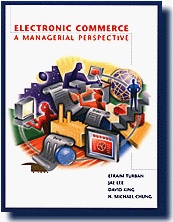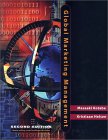| PRINCIPLES
OF
INTERNATIONAL BUSINESS & MARKETING SCM 950 |
|
||
|
|
|
The Supply Chain Council |
What
is the Supply Chain?
http://www.supply-chain.org/html/faq.htm "The supply chain -- a term now commonly used internationally -- encompasses every effort involved in producing and delivering a final product or service, from the supplier's supplier to the customer's customer. Supply Chain Management includes managing supply and demand, sourcing raw materials and parts, manufacturing and assembly, warehousing and inventory tracking, order entry and order management, distribution across all channels, and delivery to the customer." Why
is the supply chain important?
|
| Supply
Chain Management an
Supply
an
|
Supply-Chain Management
as explained in the FAQ of the
Center for Electronic Commerce 
http://cism.bus.utexas.edu/resources/ecfaq/ecfaqc2.html Q.
What is supply chain management?
key points
|
this definition is OK, on a general level, but it is not complete enough for a full understanding expanded version "a company's supply chain encompasses the
|
| . |
Industry activities to deal with enhancing effectiveness of Supply Chain Management
information competitiveness What has changed in the millenium is the need to quickly share and disseminate information across the supply chain, - this follows a shift from product orientation, to sales orientation to market orientation. Pull versus Push Supply Chain
models
- Pull based models
require a lot of information about the customer
|
| Supply
Chain Component Parts Supply
Supply
|
Supply Chain
Management
as explained in the Schneider and Perry book, Chapter 9 - the component parts
|
| Supply
Chain Component Parts LOGISTICS
Supply
LOGISTICS |
Supply Chain
Management
Logistics Activities include, [added by witiger]
logistics = materials management Logistics is that part of
the supply chain process that plans, implements, and controls the efficient,
effective flow and storage of goods, services and related information from
the point of origin to the point of consumption in order to meet customer's
requirements"
exploded to see more clearly what this long statement means "Logistics is that part of the supply chain process that
this quote comes from the Council of Logistics Management and is re-quoted in the text page 629
The Council of Logistics
Management is quoted from in the text on page 629, sooo, we'll simply go
direct to the CLM webpage at www.clm1.org
|
| Global
Manufacturing Strategy Global
Global
|
"The success of a Global Manufacturing Strategy depends on four key factors 1. Manufacturing Compatibility
1. Manufacturing Compatibility cost minimization strategies - AKA trying to save money2. Manufacturing Configuration three basic configurations
"the linking or integration of activities into a unified system" 4. and Control" "... one aspect of control is the organizational structure" org charts
Plant Location Strategies "Once MNEs determine that they will enage in FDI to suply foreign markets, they need to determine which countries to invest in and where within each specific country" text page 633 Textbook discusses General Motors choice of Thailand over the Philippines text notes "... there are
more auto suppliers..."
Attracting large MNEs to invest is a bit like a country winning the Olympics - a very contentious issue and raises many questions - some having to do with ethics. Layout Planning Strategies Text discusses Samsonite
using the manufacturing technique of autonomous cells - which has also
been used to great success
by Japanese auto manufacturing companies in
Japan, and to some small extent in North America.
|
| Elements
of Supply-Chain Management Elements
Elements
|
another way of looking at the supply chain
"The key to making a global
information system work is information" ... duh
|
| What is an Intranet | What is an Extranet |
| "An Intranet
is a corporate LAN that uses Internet technology and is secured behind
a company's firewall. Links various servers, clients, databases and applications"
Access to Intranets is usually strictly controlled within a corporate group Intranets are most often
found in
|
"An Extranet
(extended Intranet) uses TCP/IP protocol to link Intranets over the public
Internet. Many Extranets have protected areas "Virtually Private Networks"
(VPN)
Access to Extranets is quite open and allows for independent groups to collaborate - usually parts suppliers to a big manufacturer Extranets are most often
found in
|
 from Turban's book, Chpt 7, Intranet and Extranet, page 242
from Turban's book, Chpt 7, Intranet and Extranet, page 242 |
|
We will discuss some of the
material on Intranets but in addition, the professor will ask you to note
some additional information below.
"... 40% of firms had customer extranets... 20-25% had supplier extranets..." These exact percentages are
not so important - keep in mind one thing: still, in April 2001,
a reasonable number of large size companies have corporate intranets, and
many medium sized companies are also learning the advantages of intranets,
but still only a small portion of SME's actually use extranets for supply
chain management. Extranets remain primarily a tool used by large sized
companies.
"The real attraction of the Internet in the global supply chain management is that it not only helps automate and speed up internal processes in a company through the intranet but also spreads efficiency gains to the business systems of its customers and suppliers" |

Intranets and Extranets
|
go here to download the
ppt for Chpt 7
http://www.prenhall.com/divisions/bp/app/turban/cw/ppt/ Featured in Chpt 7
Applications of Intranet
page 244- Turban Text
(this list comes from some notes in the Turban text on page 244 - additional points added in by WTGR)
|
| . | CRM is a part of Supply
Chain Management.
Why? Because in a Market Oriented company -customers voting with their wallets, lead the direction of what products will be successful with particular FABs. The process of satisfying the customer leads to taking information about that relationship, and using it to affect production and delivery of the product. WTGR |
| TQM
TQM
TQM
TQM
TQM
TQM
TQM |
Demming's
14 Point Plan for TQM
The history of how Japanese came to be the evangelists of TQM - and how the Americans tried to catch up http://www.acq.osd.mil/io/se/quality/asqc_3-99.htm " During the mid 1980s, U.S. producers who complacently held the market share for so long after World War II were now starting to lose market share to the Japanese. After World War II, the Japanese had embraced statistical quality control, taught to them by American lecturers including Dr. Demming and others who had been invited to Japan, to help them convert from military to commercial production and reverse the reputation of poor quality goods." an interesting rant about how, to some, TQM is bad for North Americans http://www.freerepublic.com/forum/a39baeaf4090c.htm "TQM was the brainchild of
the late W. Edwards Deming; it supposedly helped Japan with its postwar
economic recovery. But perhaps that was because it meshed with Japanese
culture. It does not follow that TQM is a good fit for organizing America...."Quality"
sounds like goodness, pure and simple. But with TQM, quality is not the
product but the process. To institute the process, corporate trainers must
bring about a "total cultural change," wherein all
Tim Richardson 1998 speech "TQM worked well in a homogenous culture such as Japan, but the challenge to apply TQM in North America is a multi-cultural workforce and a high Individualism Index..." TQM was considered, by the Americans in ther mid 1990's, so important to understand, and try to apply to keep up with the Japanese, that they even taught the concept in the U.S. military. check Naval War College Notes: www.nwc.navy.mil/library/3Publications/Eccles%20Library/LibNotes/libtql.htm |
. |
http://www.icon.co.za/~tqma/kaizen.html KAIZEN is a Japanese word meaning gradual, orderly, continuous improvement. The KAIZEN business strategy involves everyone in an organisation working together to make improvements without large capital investments. KAIZEN is a culture of sustained
continuous improvement focusing on eliminating
Principles:
"As an industrial norm, Japanese
practices seemed to embrace belief in multi-skilled, committed employees
who respond flexibly and with know-how to resolve local, operational problems
and fluctuations. If sales are low instead of continuing to produce blindly,
reviews of practices and efficiencies, maintenance operations and
training would be normal activities for employees in a team. Rank-and-file
employees might participate in other creative endeavours."
Kaizen used by North Americans
in their business language
Kaizen can also be used by
North American businesses as an excuse to make changes very slowly, or
not make changes at all. Read this interesting critique
Kaizen's importance to the
Japanese
|
| Basics of CRM
"Customer Relationship Management (CRM) is developing into a major element of corporate strategy for many organisations. CRM, also known by other terms such as relationship marketing and customer management, is concerned with the creation, development and enhancement of individualised customer relationships with carefully targeted customers and customer groups resulting in maximizing their total customer life-time value....Narrow functionally-based traditional marketing is being replaced by a new form of cross functional marketing - CRM.... the focus is shifting from customer acquisition to customer retention" Why is time and money spent on CRM worthwhile, Payne notes "Research shows that a 5% points increase in customer retention yields a profit, in net present value terms, of between 20% and 125%" http://www.ittoolbox.com/peer/AP_website.htm
CRM for Dummies
"...why the sudden talk about
CRM?... With a general slowdown of the global economy companies are finding
it hard to get going....Gone are the days where you had a technological
edge over your archrival. With new and affordable technologies your competitor
is just a matter of days behind you in terms of product launch. So what
are you left with as a key-differentiating factor? ...customers need to
be looked at more seriously than ever before ... information is the key
to success. Information about the customer made available to the person
coming in contact with the customer can go a long way not only in clinching
the deal but also creating a very good relationship with the customer for
future business...
WTGR - does this mean you torture yourself to satisfy every single customer as best you can? Answer, no. You use various software tools and information tracking methods to determine which customers spend the most money on particular products, and you then focus on them
WTGR - in the past companies relied on sales people with good personal contacts and networking skills to build up good will with customers and create CLV - Customer Lifetime Value - problem was, whent these people left the organization, all these contacts went with them (in fact many good salespeople are often headhunted to obtain new accounts). These situation became one of the weakness of organizational information structure - that being the point that people possessed information, not institutions. CRM is an attempt to build "institutional knowledge" regardless of the individual salespeople's personal contacts and information.
|
other various white papers
and reports on CRM
http://www.crmassist.com/nav/t.asp?t=402&p=402&h1=402
| . |  Chpt 15
Chpt 15
Human Resource Management
in International Business
|